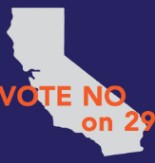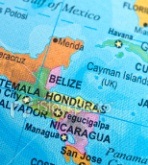Viaje has made a name for itself creating extremely limited production cigars. In fact, Viaje’s cigars are made in such limited quantities that they often sell out in mere days.
 Since chances are the Viaje cigar you have your eye on will be sold before you have a chance to sample one, purchasing many is pretty much an act of faith. Maybe Viaje’s small batches are a brilliant marketing strategy (some might call it a gimmick) but the incredibly small size of the release drives demand for these rare cigars.
Since chances are the Viaje cigar you have your eye on will be sold before you have a chance to sample one, purchasing many is pretty much an act of faith. Maybe Viaje’s small batches are a brilliant marketing strategy (some might call it a gimmick) but the incredibly small size of the release drives demand for these rare cigars.
That is certainly the case with the Skull and Bones series, of which the three new editions of only 300 boxes of 25 (7,500 total cigars) were released. Two of those were a second edition of a cigar released a year ago: the WMD “Weapon of Mass Destruction” (3.75 x 54) and the MOAB “Mother of All Bombs” (4.5 x 52). A third, the FOAB “Father of All Bombs,” was a new addition to the Skull and Bones line.
FOAB is slightly fatter than the MOAB with a 56 ring gauge and the same 4.5 inches in length. Like all Viaje cigars, it is made at the Raices Cubana factory in Honduras, which also produces cigars for Illusione, Padilla, Alec Bradley, La Palina, and others. The Viaje FOAB is an all Nicaraguan blend with a dark sun-grown criollo wrapper. The cigar sells for $9.20 each ($230 for a box of 25), a substantial price for a cigar you might call a petite robusto.
With a name like Father of All Bombs, you’d expect a full-bodied a bomb of a cigar, and while FOAB is definitely full-bodied (no matter what your definition is), it isn’t overwhelmingly so. Perhaps that’s why Viaje owner Andre Farkas says he doesn’t include the FOAB (or MOAB) in the Skull and Bones red line, because MOAB and FOAB aren’t nuclear but conventional weapons.
The cigar features charred oak, chocolate, and dark coffee. There’s also bready and roasted nuts present, notes you wouldn’t usually identify with a full-bodied smoke. It’s surprisingly well-balanced, though the flavors don’t change much throughout.
Construction was excellent for each of the three cigars I sampled with a solid gray ash, firm-but-not-difficult draw, and straight burn. Given that this little cigar costs almost $10 each, it would have been very disappointing if it weren’t well-constructed.
I only picked up a five-pack (it cost me $46), and there are very few left so I look forward to seeing how my remaining cigars deal with a bit of age (and I should note that I smoked these within days of receiving them). Ultimately, though, I really did enjoy the FOAB. I was pleasantly surprised to find this cigar not overwhelmingly strong. It may not be a cigar for beginners, but it has enough balance to be enjoyed by a seasoned smoker. That earns the Viaje FOAB (“Father of All Bombs”) a rating of four stogies out of five.

[To read more StogieGuys.com cigar reviews, please click here.]
–Patrick S
photo credit: Stogie Guys


 1) On June 5, Californians will vote on Prop. 29, a measure that would increase already-high state cigar taxes by 73%. California Citizens Against Wasteful Taxes issued a press release on Tuesday citing that “the estimated $735 million raised annually by these tax increases will be spent on cancer research, but spending decisions will be made by a bureaucratic committee that will not be accountable to voters or to the state legislature.†The International Premium Cigar & Pipe Retailers Association (IPCPR) is “committing significant financial resources†to help defeat the proposition, and Cigar Rights of America is also said to be involved.
1) On June 5, Californians will vote on Prop. 29, a measure that would increase already-high state cigar taxes by 73%. California Citizens Against Wasteful Taxes issued a press release on Tuesday citing that “the estimated $735 million raised annually by these tax increases will be spent on cancer research, but spending decisions will be made by a bureaucratic committee that will not be accountable to voters or to the state legislature.†The International Premium Cigar & Pipe Retailers Association (IPCPR) is “committing significant financial resources†to help defeat the proposition, and Cigar Rights of America is also said to be involved. In each cigar review, for example, we always try to provide the country (or countries) of origin of the wrapper, binder, and filler, when that information is available. And it often is. So most of our
In each cigar review, for example, we always try to provide the country (or countries) of origin of the wrapper, binder, and filler, when that information is available. And it often is. So most of our  Since chances are the Viaje cigar you have your eye on will be sold before you have a chance to sample one, purchasing many is pretty much an act of faith. Maybe Viaje’s small batches are a brilliant marketing strategy (some might call it a gimmick) but the incredibly small size of the release drives demand for these rare cigars.
Since chances are the Viaje cigar you have your eye on will be sold before you have a chance to sample one, purchasing many is pretty much an act of faith. Maybe Viaje’s small batches are a brilliant marketing strategy (some might call it a gimmick) but the incredibly small size of the release drives demand for these rare cigars.
 The name is a reference to the cigar’s strength and La Palina owner William Paley, who is called Bill or “Little Bill” to his family. As the re-founder of La Palina (his grandfather Samuel Paley founded the brand in 1896 but Bill Paley re-established it a few years ago) explains in this
The name is a reference to the cigar’s strength and La Palina owner William Paley, who is called Bill or “Little Bill” to his family. As the re-founder of La Palina (his grandfather Samuel Paley founded the brand in 1896 but Bill Paley re-established it a few years ago) explains in this 

 Patrick Ashby
Co-Founder & Editor in Chief
Patrick Ashby
Co-Founder & Editor in Chief Patrick Semmens
Co-Founder & Publisher
Patrick Semmens
Co-Founder & Publisher George Edmonson
Tampa Bureau Chief
George Edmonson
Tampa Bureau Chief